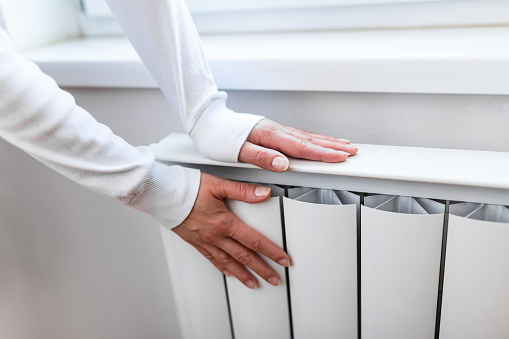How To Bleed A Radiator In Your Home
Chill talks you through it

We all remember that classic scene in Father Ted where Ted and Dougal go into hibernation so that they can survive the extreme cold of their house due to the high cost of heating during the winter - and sadly, this isn’t too far from many people’s realities.
You probably have some heat reducing routine that is in action by now. For many, it involves getting the throw blankets out of storage. Then rooting around in the wardrobe for the warmest fleece lined jacket they can find. All this in the hope that they can avoid turning on the central heating for as long as possible. But is there anything practical you can do to warm the house and lower the costs at the same time?
Here in Chill house we are always looking for ways to help you save money, usually through our home insurance money saving tips and suggestions. Our suggestion starts with a simple question, are your radiators working?
If your answer starts with "no, what now", then it might be time you thought about bleeding them.
Why You Need To Bleed Your Radiators.
- Water based central heating systems only work if there is a minimal amount of air in the system.
- When turned on the bottom of your radiator is warm but the top is still cold consider this a sign that there is excess air in the system.
- There is a noticeable noise coming from the pipes and radiators indicating air trapped in the system.
Why You Should Bleed Your Radiators.
- Bleeding a cold radiator can help improve efficiency and reduce waste.
- Malfunctioning radiators can increase your heat bill.
What you need to bleed your radiator
- Access to the bleed valve.
- A radiator key. (More recent commissioned radiators don’t require a key as they can be opened using a flathead screw driver).
- Kitchen towel or cloth to soak up water released from the radiator.
How to bleed your radiator
- Locate your bleed key/screw driver and bleed valve.
- Make sure the heating is turned off as to not introduce additional air into the system.
- Make sure the intake and exit valves are open.
- Place the cloth/kitchen towel under the valve.
- Open the bleed valve. If there is air trapped in the system you will get notice a hiss coming from the valve. This will continue until you will get water coming from the opened valve.
- Close valve and repeat on any other radiators that you have identified as being faulty.
- Check your boiler pressure levels to ensure that you haven’t affected the overall pressure within the houses heating system. If this is the first time you have had to do this you should consult the instruction guide as provided by the manufacturers.
You should contact a qualified professional if the heating problems continue as there may be underlining issues that you haven’t identified that are causing the heat loss in your home.
